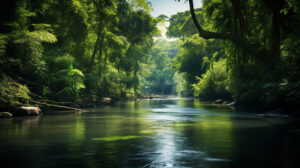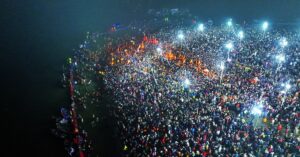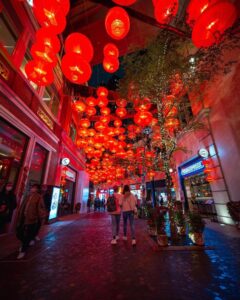Have you ever dreamed of witnessing a celestial ballet of colors in the night sky? The aurora, nature’s very own light show, offers just that. This mesmerizing spectacle is not just a stunning visual feast; it’s a cosmic phenomenon steeped in history and science, one that continues to awe observers and confound experts.
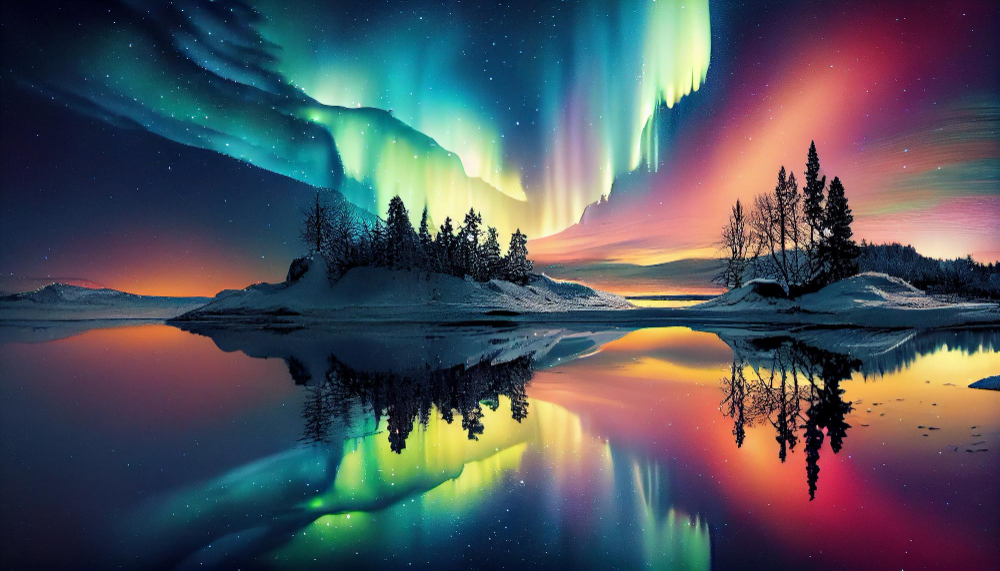 Pin
Pin Table of Contents
Auroras: Nature’s Luminous Phenomena
High above the planet, in the velvet expanse where earthly skies merge into the cosmic sea, a dance of luminous splendor unfolds. Earth’s polar regions are the theaters for this celestial ballet — the auroras. These are Nature’s own festivals of light, an ethereal display of colors flitting across the heavens, mesmerizing all who witness their grandeur.
In the north, where the compass needle pauses in reverence, lies the dominion of the aurora borealis, the northern lights. Here, against the backdrop of a deep sapphire sky, they rise, almost as if the cool whisper of the universe itself ignites them. These lights, with their ever-changing patterns, paint strokes of vibrant greens, pinks, violets, and blues — an artist’s palette swirled by invisible hands. They twist and arc, ebb and fade, an elusive masterpiece crafted by the fundamental forces of nature.
The aurora borealis does not dance alone. Its partner, symmetrical and yet unique, is the aurora australis of the southern hemisphere. Found in the embrace of the Antarctic silence, the southern lights echo the spectacle of their northern kin but do it their own way, over silent fjords and sleeping glaciers. Together, these phenomena are Earth’s testament to the grand and delicate architecture of our solar system’s forces at play.
United by science yet divided by geography, the phenomena share an origin in cosmic events far above the planetary surface. When the sun, that unblemished engine of nuclear might, releases a coronal mass ejection, it casts a stream of charged particles across the solar system. This solar wind, upon reaching Earth, collides with the magnetic field that cradles our world, funneling particles towards the poles.
The force of the collision sets the polar sky ablaze with energy. Oxygen and nitrogen, the very stuff of the air we breathe, are excited to higher states only to cascade back to normalcy in shimmering waves of light. It is a grand and silent storm of photons, a spectacle of light where the sky itself seems to rejoice. The auroras are a testament to Earth’s enduring shield, a magnetic marvel without which this light show could not exist.
To the ancients, these ethereal waves of light were omens or spirits. To the modern stargazer, they are a reminder of our place in the universe — small, yet connected by the vastness of cosmic forces. Whether viewed from a snow-dusted hill in Lapland or a stark plateau in Antarctica, the auroras are bridges to the profound, silent poetry of the cosmos.
Nature’s luminous phenomena, ephemeral and elusive yet stark in their beauty, are invitations to reflect on the ever-present play between light and darkness, between the known and the mysterious. For every person standing under the auroras, whether in contemplation or exhilaration, there is a shared moment of communion with the sublime, a gentle whisper from the universe that echoes the age-old refrain: we are not alone in the dark, and there is wonder beyond the light.
The Science Behind the Shimmer
In the celestial dance of the cosmos, there is a spectacle that outshines the mere twinkling of stars – the aurora. It is a phenomenon that has held captive the human imagination from time immemorial; a tapestry of color draped across the polar heavens. To understand the aurora is to delve into a realm of science that sits at the convergence of the Earth’s own defenses and the relentless activity of our star, the sun.
The story begins with a journey of charged particles, the solar wind, birthed in the inferno of the sun’s atmosphere. These particles, predominantly electrons and protons, are thrusted into space at speeds that defy the very limits of our Earth-bound existence, a relentless stream emanating from the fierce solar corona. Millions of miles they travel, through the cold vacuum of space, where planets and moons are mere silent witnesses to their voyage.
As this torrent approaches Earth, it encounters a guardian – the geomagnetic field. Invisible to the naked eye, this magnetic shield cocoons our home, guiding the solar wind towards the poles with the gentle authority of a cosmic shepherd. It is the Earth’s magnetic field that bends the particles’ paths, forging a route towards the magnetic North and South, where the stage is set for the auroras’ theatrics.
The atmosphere, a thin veil of gases surrounding our planet, awaits these charged particles. Rich with nitrogen and oxygen, each encounter with the travelers becomes a collision of cosmic significance. As these energetic particles collide with the atmospheric gases, an exchange occurs, a kind of celestial alchemy – the kinetic energy of the solar wind is transmuted into glowing light, a visual echo of the interaction that can span hundreds of kilometers across the polar skies.
Nitrogen molecules prefer the dramatic – bestowing upon the night undulating ribbons of blue and purple, while oxygen contributes greens and reds, completing the palette that defies the dark polar canvas. The specific colors emitted depend on which gas is struck, and the altitude at which the collisions occur – greens typically flourishing at lower altitudes, reds at the higher, with violet and blue entwining throughout.
This iridescent display is not randomly splashed across the sky but follows the lines of the magnetic field, creating structured patterns that can illuminate the night. Sometimes these lights seem to dance, wave-like motions that captivate and mystify those lucky enough to witness them. The movements of the auroras echo the dynamics of the Earth’s magnetosphere under the relentless dynamo of the solar wind.
This shimmering veil, with its ebbs and flows, is not just a static painting but a dynamic cinema. It tells a story of the Sun’s temper, of Earth’s resilience, and of the delicate balance of forces that allow such ethereal beauty to exist in the harshness of space. The aurora serves as a reminder that our planet is not an isolated speck of dust but a connected ecosystem within the broader tapestry of our solar system.
Thus, the science behind the shimmer of the auroras is a narrative of incredible journeys, of collisions and artworks drawn in light, a tale stitched in the very fabric of our universe – its laws, its forces, and the enchanting phenomena that result when cosmic powers converge. This is the nature of the aurora: equal parts science and spectacle, a natural wonder that serves as a bridge between the heavens and humanity’s endless quest for understanding.
Twilight Spectacle: The Ethereal Dance of the Aurora Borealis in the UK Skies
Far above the bustling cities and quiet villages of the United Kingdom, there unfurls a spectacle of the cosmos seldom seen at such mild latitudes. Here in the UK, the aurora borealis, that ethereal dance of the heavens, offers a connection to the far reaches of our planet’s magnetic influence. While the polar regions hold court as the most perpetual theatres to this cosmic ballet, sometimes the curtains rise, ever so slightly, at lower latitudes.
If you will, the picturesque British countryside under a twilight blue sky as daylight fades. The first stars twinkle into being as twilight kisses the horizon, and if you’re north enough, say in the rugged expanse of the Scottish Highlands, there’s a chance you’ll witness the aurora’s mystical hues streak above. Yes, the further north you venture, the closer you get to the auroral oval, the usual ring where these displays are a common marvel.
Yet on nights when the solar wind whispers stronger than usual to Earth’s magnetic field, this oval expands, casting its glow deeper into the heart of the UK. Historical accounts and modern-day reports tell of instances when the northern lights have flared into visual range as far south as Cornwall and Kent, as if the sky itself descended to share its secret colors with more of humanity.
To catch whispers of this celestial performance, optimistic skywatchers can turn to the diligent sentries at Lancaster University’s Department of Physics, where AuroraWatch UK combines science with vigilance. Their website serves as a compass to the cosmos, estimating the probability of auroral displays reaching the British skies through assessments of geomagnetic activity—a whispering crystal ball of high-tech proportions.
Follow the team’s Twitter feed, and you become part of a modern network of auroral chasers, receiving alerts thrumming through the digital ether—each alert, a hopeful herald of solar wind’s earthly encounters.
Yet, even with science’s guidance, the aurora necessitates the right conditions. They ask for nights shrouded in darkness, unmarred by the glow of city lights, where the sky is as clear as glass, a perfect canvas for the aurora’s delicate brushstrokes. Only then, under these hushed and reverent conditions, might the auroral spectacle gracefully reveal itself.
And so, as night blankets the British Isles, those who yearn for the sight keep a watchful eye on the skies and the whispers from far-off Lancaster’s learned halls, hoping that tonight, the solar winds and Earth’s defenses waltz in view, painting the aurora across the longing dark.
Cultural and Historical Significance
In the ethereal reaches of the polar skies, where night whispers secrets to the vastness of space, the auroras dance—an ephemeral ballet of light that has stirred human souls through ages. These celestial phenomena, commonly known as the Northern and Southern Lights, are more than merely scientific marvels; they are tapestries upon which cultures have embroidered their deepest myths and inspirations.
The auroras’ shimmering curtains have unfurled across the ages, a skybound canvas swirling with the colors of ghost fires and ocean depths. To our ancestors, these spectral undulations were not just streaks fired by solar winds but a bridge to understanding existence itself—a liminal space where the terrestrial world brushed against the divine. Each flicker and flare was a narrative, a poetic display of the universe’s reticent language.
In the frozen sanctuaries of the Arctic, ancient myths resonated with each appearance of the aurora. The indigenous peoples, draped in furs against the biting cold, gazed up in reverence—a celestial theater above them. The Inuit of the Northern regions beheld the lights as the spirits of the animals they hunted: seals, salmon, caribou, their ethereal forms cavorting in the heavens. This connection to nature ran visceral and deep, the aurora a divine embodiment of the creatures sharing their land, air, and traditions.
Scandinavian lore, painted with the stoic bravery of its Viking forebears, spun tales of the auroras as reflections of grand celestial happenings. Longboats returning by the light of the auroras, with Vikings, eyes turned skyward, envisioning the gallop of valkyries. These mythic maidens shimmered in the auroral glow, imagined as the radiant escorts of fallen warriors ascending to Valhalla—a place of honor, feasting, and eternal glory.
Elsewhere, interpretations of the auroras were infused with the tremble of fear and the specter of omens. Medieval Europeans, prone to see the world in terms of portents and signs, could view the undulating lights as harbingers of war or famine. Each undulation whispered prophecies, and the blood-red hues that sometimes painted the auroral canvas foretold bloodshed upon earthly battlefields.
As silent poets and artists basked in the glow of these heavenly phenomena, the auroras wove themselves into humanity’s culture and history. The lights became a muse, a silent invocation for creativity that transcended borders and epochs. Painters attempted to capture their fleeting majesty on canvas, while writers sought to imprison their essence in prose and poetry. They became symbols of beauty, inspiration, and even the spiritual quest for understanding one’s place in the vast cosmos.
Through scientific endeavor, we have come to understand the auroras’ formation—the result of charged particles from the sun colliding with Earth’s magnetic field. However, even in our age of empirical knowledge, the auroral spectacle retains its ancient power, reminding us that the universe holds mysteries and truths beyond the reach of human comprehension. They stand as a testament to the awe that nature can evoke and reflect humanity’s perpetual quest to weave meaning into the tapestry of existence.
The auroras, with their timeless dance, continue to bridge the chasm between the old and new, between science and myth, remaining one of earth’s most poetic and unifying wonders.
The Photographer’s Quest for the Perfect Shot
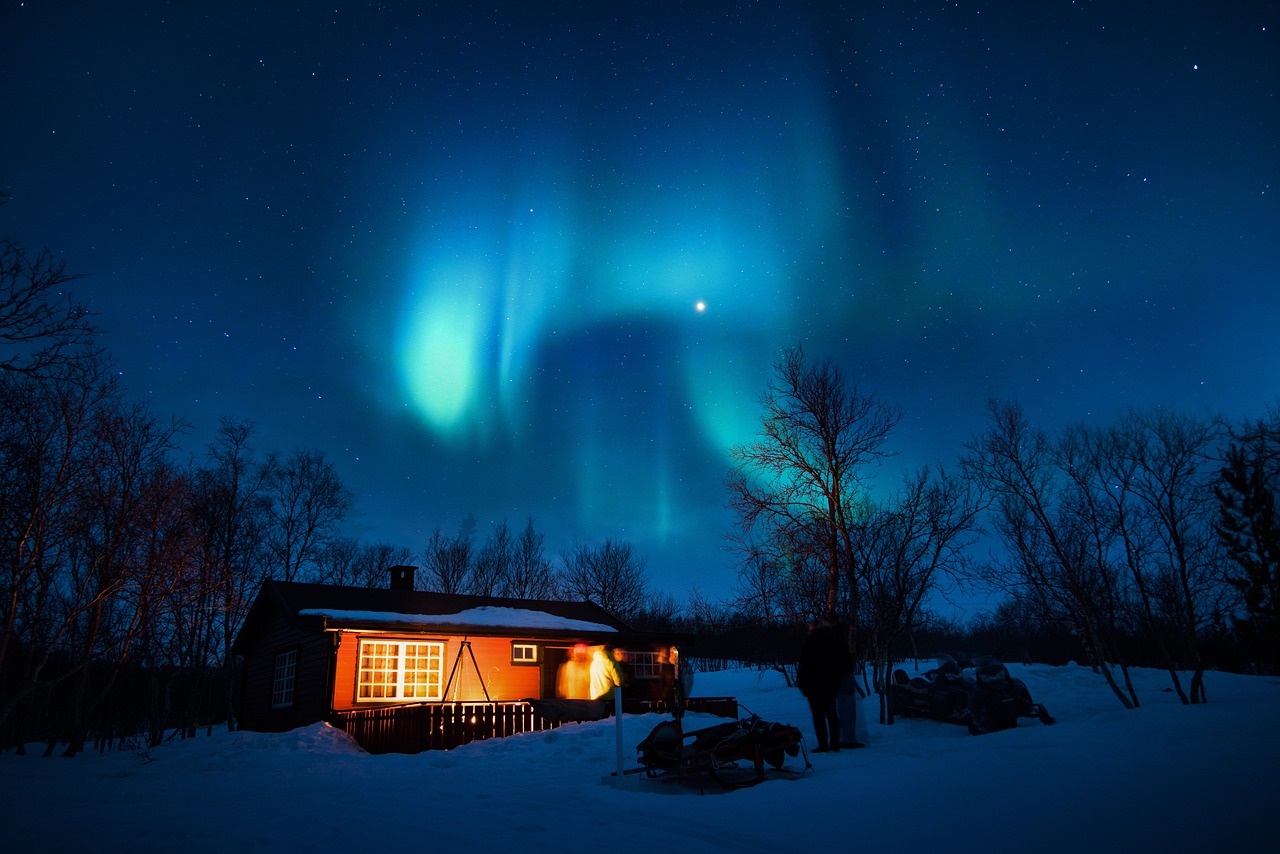 Pin
Pin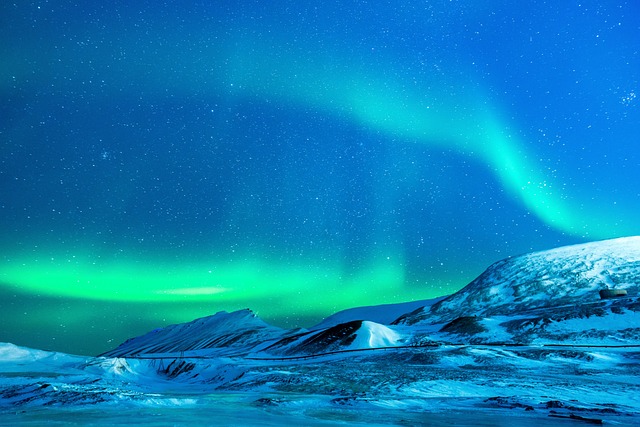 Pin
Pin Pin
Pin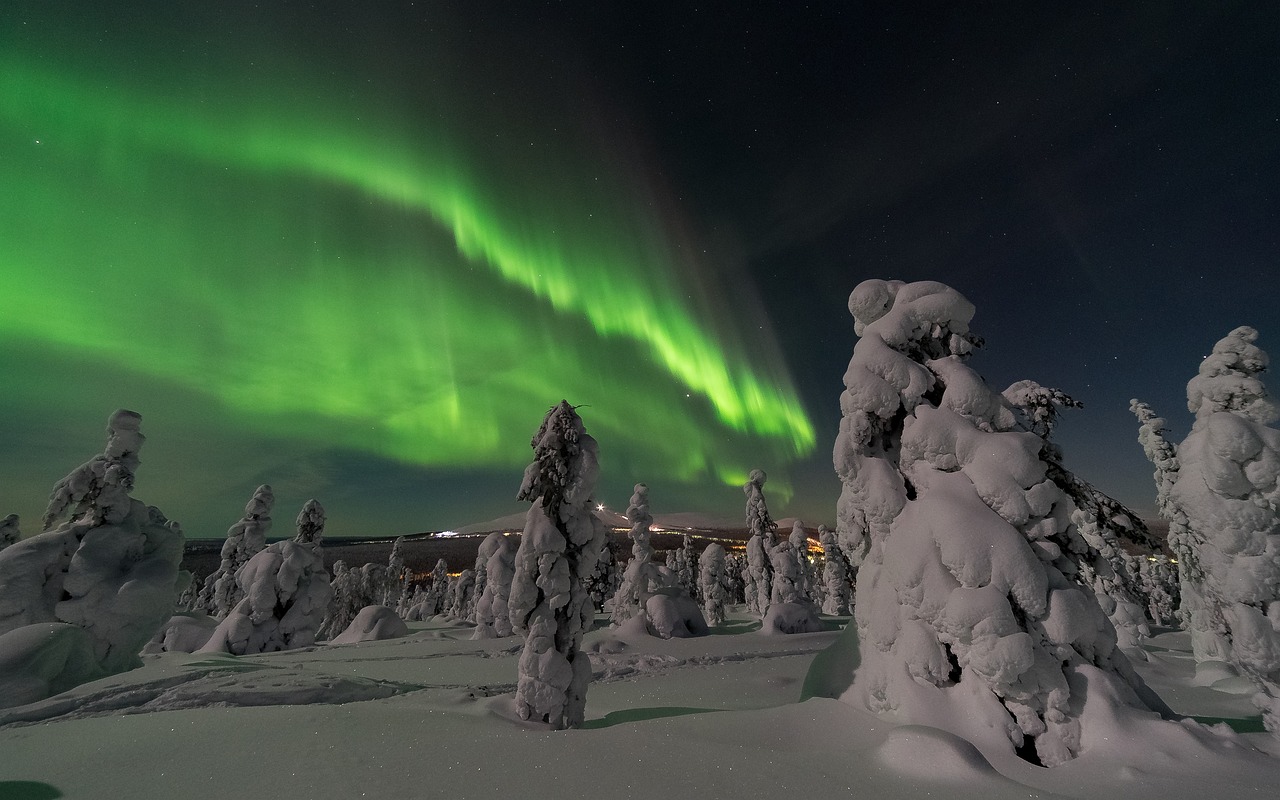 Pin
Pin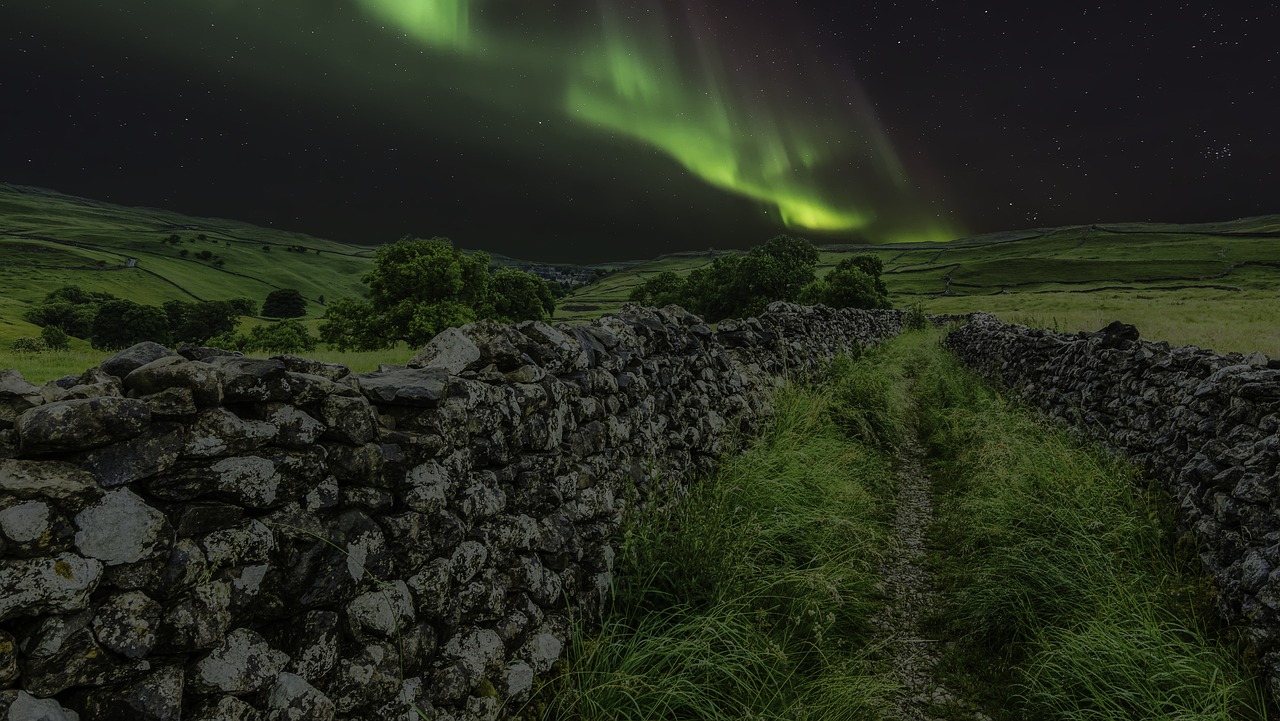 Pin
PinIn the deep ink of night, where frost whispers tales on the edge of the wind, there lies an unspoken pact between the relentless seeker and the ephemeral skies. The Photographer’s Quest for the Perfect Shot is not just a journey through the biting cold or the lonesome darkness; it is a pilgrimage to the altar of nature’s most elusive cathedral—the aurora borealis.
Armed with lenses and tripods like knights with shields and swords, they venture forth, these artists of light—photographers with eyes wide as the horizon. They seek not just an image but a touch of the divine, a spectral dance to frame within the confines of their cameras. Each frame is a whispered hope for the perfect alignment of sky’s whimsy and lens’s readiness.
To gaze upon an aurora is to witness the Earth in silent sonnet with the sun’s most ancient wind. In their quest, these enthusiasts of eternal vistas listen for the silent music of the cosmos, hoping to capture a verse, a pause, a crescendo of colors unseen. The perfect shot is a fickle prize, offering no promises, harboring no routine. It is the hunt for a moment of such singular beauty, it seems a lifetime’s work distilled into a singular click, the interlude of shutter speed.
Under the cloak of night, they stand patient and silent, figures stolid against the frost’s bite, eyes fixed heavenward where the celestial paintbrush dabbles shades of green, purple, and magenta across the black canvas. When the auroras pirouette and sway in their unpredictable performance, the photographers find communion in this display. The thrill is not solely in the capture but in the pursuit, the untamed anticipation—each journey a roll of cosmic dice.
It’s beyond mere profession; it’s the passion lighting the darkness, warming the cold—an infinite chase, for the auroras are as fickle as they are beautiful. But oh, when nature consents, unfurling her vibrant spectrum across the expanse, the moment is transcendent. Shutters flutter like the wings of an ephemeral butterfly, and, for an instant, time is as still as the photograph to come.
For the determined photographer, the quest for the perfect shot of the aurora is Sisyphean, yet crowned with the potential for rare, frozen in time perfection. Each blank memory card is a new dream, each expedition another verse in the ongoing epic. And when the night finally reveals its masterpiece, the labor, the cold, the wait—they all fade into the hush of awe. The perfect shot is captured, is lived. It’s an immortal whisper from the cosmos, and forever after, when eyes wander to that image, hearts will beat to the rhythm of that distant, cold night when the sky painted wonders and the world stood still to watch.
Do auroras occur on planets beyond Earth?
In the tapestry of the cosmos, the phenomenon of aurorae weaves an enchanting narrative across the solar system, binding celestial bodies in a shared experience of magnificence. Far beyond the familiar skies of Earth, where the aurora borealis and aurora australis perform their breathtaking ballet, other planets engage in their cosmic renditions, each unique to the fabric of its atmosphere and magnetic embrace.
The gas giants, with their thick atmospheres and strong magnetic fields, are maestros of the auroral show. In the shadowed corners of the outer solar system, they host curtains of light that dwarf the terrestrial displays. Jupiter, the colossal guardian of the planets, harbors aurorae that illuminate its poles, casting a glow so vast it could engulf multiple Earths. These celestial light shows are fueled by Jupiter’s own volcanic moon, Io, which spews out material that interacts with the magnetic field lines to ignite the Jovian skies.
Saturn, with its elegant rings, conducts an auroral symphony of its own. The planet’s magnetic field creates a spectacle that can only be described as ethereal; auroral emissions lace the pole regions, ringing the planet with an otherworldly glow. The solar winds, collisions of charged particles that flow from the Sun, engage with the magnetic fields, and the atmosphere of Saturn dances in response, a celestial waltz set to the silent music of the vacuum of space.
Uranus and Neptune, the ice giants, offer a different scene in the celestial theater. Their magnetic fields are peculiarly tilted and offset from the planet centers, leading to an irregular and extraordinary auroral display. The aurorae here, though less prominent than those of their larger siblings, still strike the onlooker with a sense of wonder, reminding us of the diversity and grandeur that the universe holds.
Even Mars, the ‘red planet’, partakes in this cosmic dance, though its performance is rather unconventional. Lacking a planet-wide magnetic field, Mars instead boasts localized magnetic fields scattered across its surface, creating an extraordinary venue for aurorae. Unlike Earth’s concentrated auroral rings, Martian aurorae can occur across a more widespread canvas, painting the entire planet with a faint, yet ever-present glow, a testament to the solar winds that brush against its thin atmosphere.
These auroral displays are tokens of a universal language spoken by the planets — a language of magnetic fields and solar winds, intermingled with the gases of atmospheres. When the conditions align, they show us a visual symphony, a display of colors that capes the poles of these distant worlds. Scientists, peering through the eyes of modern technology, capture images that reveal these distant spectacles, linking us through the awe of discovery to every corner of our solar neighborhood.
In every captured image of a distant aurora, we glimpse a connection that is both humbling and profound. The same processes that paint the night sky of our ancient Earth originate in the hearts of our planetary neighbors. And as we observe, we learn, and we wonder, about the vast and beautiful cosmos we all share.
Chasing the Lights
The pursuit of the elusive and breathtaking auroras—a celestial dance of colors in the night sky. For many, it’s an experience that beckons like a siren’s call. The best moments to indulge in this natural wonder align with the equinoxes, periods when the Earth’s geomagnetic field aligns in a way that intensifies solar wind interactions and increases the chance of auroral displays.
As autumn or spring equinox approaches, a window to another dimension seems to open. The veil between the sun’s fiery breath and Earth’s protective embrace thins, allowing more solar particles to cascade towards us, setting the stage in the high latitude theaters of the Arctic and Antarctic Circles.
In these remote locations, under the expansive dome of the polar skies, the air becomes crisp and clear—a perfect canvas. The world quiets, and anticipation buzzes through photographers, nature lovers, and the curious who journey from afar, each yearning for the sight that has stirred human imagination across millennia.
Despite the cold, spectators huddle, cameras at the ready, eyes skyward, waiting for the display to begin. As darkness envelops the landscape, excitement mounts. Then, with a sudden whisper of light, the show commences. Greens, pinks, violets, and blues dance overhead in waves and curtains that seem orchestrated by an unseen maestro.
But these lights don’t reserve their performance strictly for the polar audience. Sometimes, the auroras stray southward, a geomagnetic surprise for those living far beyond the usual latitudes. It’s a rare gift, perhaps a reminder of the wandering nature of the Earth’s magnetic fields, and the generous reach of solar activity.
For those who actively chase the lights, the pursuit is about more than witnessing a natural phenomenon; it’s a pilgrimage seeking connection with the cosmos, an understanding of the planet’s place in the universe, and an intimate encounter with one of nature’s most profound mysteries. The auroras embody the raw and beautiful interactions above, each appearance a living reminder of the sun’s power and the Earth’s grace.
Conserving the Night Sky
In the hushed whispers of twilight, where the indigo curtain of night unfurls across the heavens, a band of committed stargazers gathers. Their mission: to safeguard the celestial theatre that plays host to the ballet of auroras. This group—astronomers, environmentalists, and lay admirers of the cosmos—not only marvel at the heavenly dance of the night sky but also recognize the fragility of its existence in the face of encroaching light pollution.
Their narrative is underpinned by a simple, noble goal: conserve the dark tapestry of the night so future generations can gaze upon the auroras just as our ancestors did—unhindered, pristine, and profound. With urban sprawl and its kaleidoscope of artificial lights, the purity of the dark sky is under siege. Each unshielded streetlamp, each neon sign, writes an invisible fable of loss—a fable that steals from the sky the stories of light that have danced across the ages.
The stargazers speak of the need for dark sky reserves, areas where light pollution is kept at bay, offering havens for the stars to shine and the auroras to paint their ephemeral strokes. They advocate for responsible lighting that conserves energy and curtails the haze that blots out celestial wonders. These heroes of the night work tirelessly, educating communities, imploring policymakers, and inspiring a movement that seeks to dim the artificial glow, so the heavens can tell their timeless tales.
This quest goes beyond mere aesthetic enjoyment; it is a battle for balance, for nature’s order. The rhythms of life, the cadences that have guided species through time’s march, are disrupted when the night sky is drenched in excess light. And so, our stargazers lobby with a sense of urgency, for the night sky’s canvas holds the auroras—a natural heritage as delicate as it is dramatic.
In their narrative, there is hope, a vision of a world where children look upwards to a ballet of lights, their minds captivated by the same celestial wonders that have inspired myths, guided explorers, and given birth to science. The conservation of the night sky is, at its core, a conservation of perspective—the longing to remain small under an expansive universe, to wonder, and to dream.
The stargazers’ quest is a testament to the majesty of the dark, where the auroras—those ethereal streamers of green, purple, and pink—can continue their ancient dance. Each effort to preserve the darkness is a guard against the forgetting of the cosmos, a commitment to the cosmic spectacle that belongs to us all. It’s a grand design, a campaign of light against light, for the sake of darkness, so that the auroras may endure in their full glory, now and forevermore under the vast, storied, and splendid night sky.
The Enigmatic Dance of Lights: Video
Conclusion
The auroras, both Borealis and Australis, transcend the mere visual splendor that paints the poleward skies. These ethereal dancers of night are not simply a fascination to the eye; they represent a profound intersection where science, culture, and raw natural beauty converge. For the scientist, each shimmering curtain of light is a chapter in the cosmic textbook, a sparkling demonstration of how our planet interacts with the solar wind’s charged particles. The historian reads through the hues, deciphering tales of old, when the lights were omens, guiding stories and myths across civilizations.
The artist sees the grand canvas stretched wide, where the palette of the cosmos dips its brushes. Their soul responds in kind, seeking to harness and interpret this natural gallery of light—an inspiration flowing from the skies to the tip of the brush, the stroke of the pen, the click of the shutter. For the dreamy-eyed stargazer, the aurora represents the tether to the celestial, an interstellar connection that humbles the heart. It whispers of the wonder our delicate blue planet harbors, a wonder that, in a universe vast and often inscrutable, we have been gifted to witness.
And you, whether your interest is piqued by the science, the history, the art, or simply the pure and enthralling beauty of it all, are invited to this natural coronation. The auroras are the earth’s magnetic field at play, a cosmic ballet, where solar and terrestrial forces are the dancers, and we, the fortunate audience.
Here’s to the hope that one day, you will find yourself under the vault of night, in the silence of the polar wilds. As the temperature drops, you may shiver; but let not only the cold be the cause. For as the auroras begin their spectral dance, with colors that speak in a language older than words, you will find yourself trembling from the overwhelming splendor of it all. The auroras are not mere lights; they are a reminder of the ineffable beauty our world generously unveils—a beauty before which we stand in awe, under the vast night sky, shaking with the cold, yes, but more so from the sheer, unbridled beauty of the auroras gliding majestically overhead.
FAQs: The Enigmatic Dance of Lights: Aurora Borealis and Aurora Australis
They are natural light displays in Earth’s sky, predominantly seen in high-latitude regions. The Aurora Borealis, or Northern Lights, occurs near the North Pole, and the Aurora Australis, or Southern Lights, near the South Pole.
Auroras are the result of disturbances in the magnetosphere caused by the solar wind. These disturbances are a result of charged particles colliding with atoms in the high altitude atmosphere.
To some extent. Auroral displays can be forecasted based on solar wind activity. However, the exact details of when and where an aurora can be seen can be unpredictable.
Auroras can display a variety of colors, commonly green and pink. Other colors like red, yellow, blue, and violet can also appear depending on the type of gas molecules involved.
Auroras at both poles are caused by similar mechanisms, but they occur in opposite ring-shaped regions around the Earth’s magnetic poles. They can differ due to magnetic field orientation and observer perspective.
The best time is during the winter months in both the Southern and Northern hemispheres due to longer, darker nights, and often increased solar wind activity.
Strong auroral events can interfere with radio communications, GPS signals, and power grids. However, such occurrences are rare.
No, observing auroras is not dangerous. The phenomena occur well above the Earth’s surface, and observers can safely enjoy the light show from the ground.























